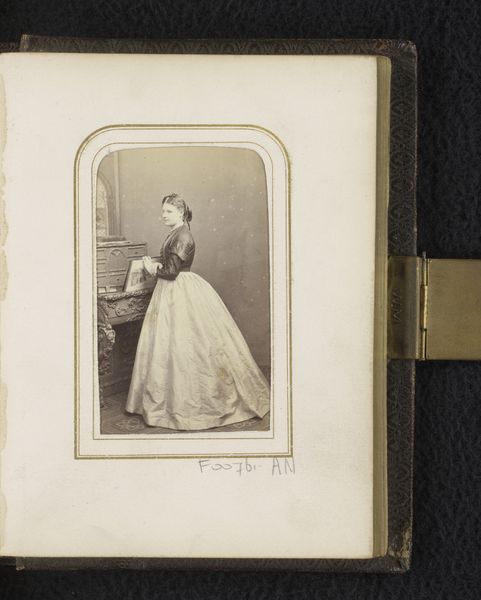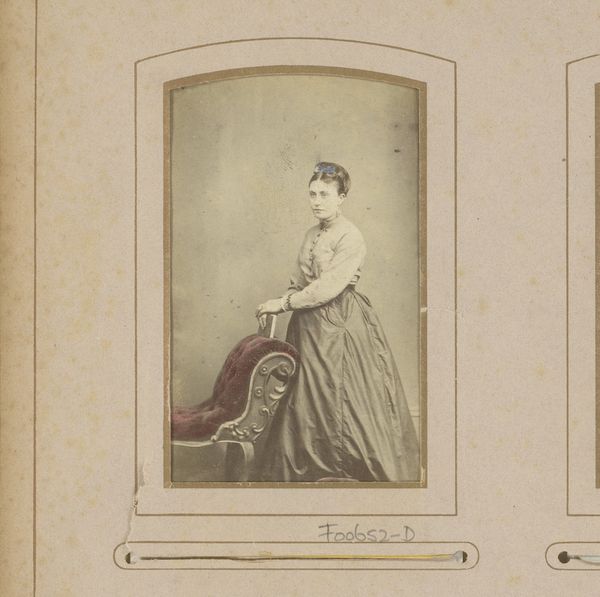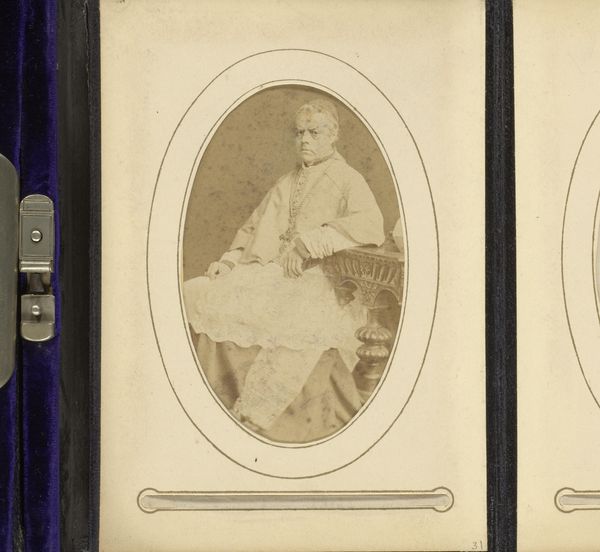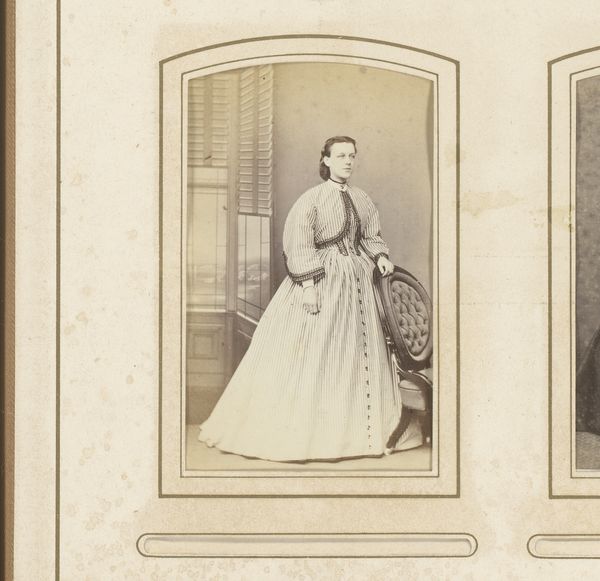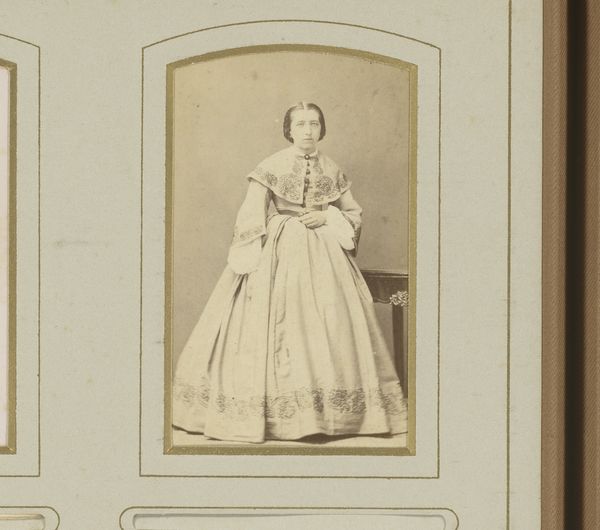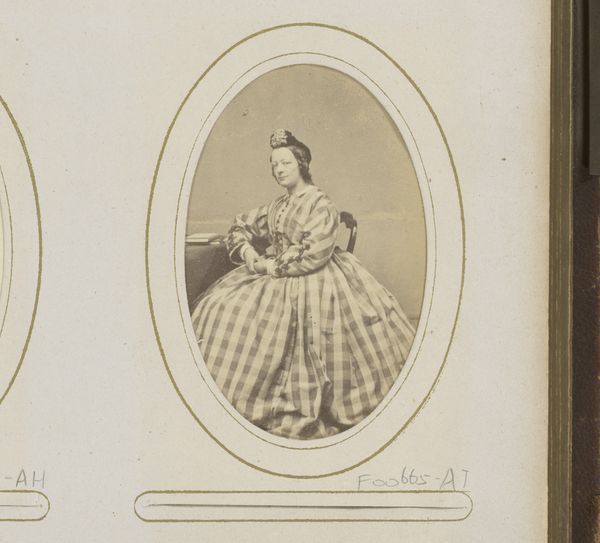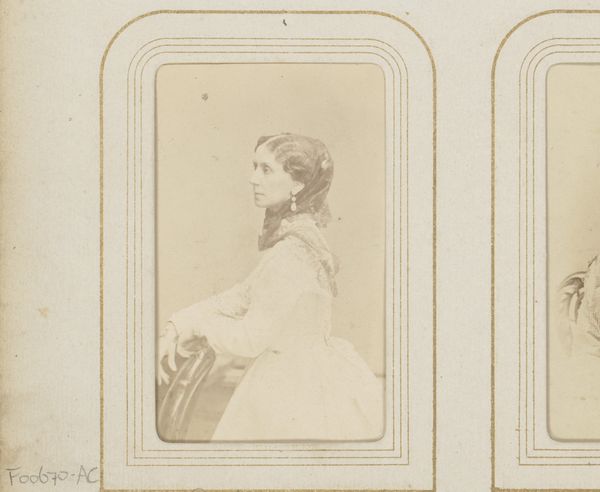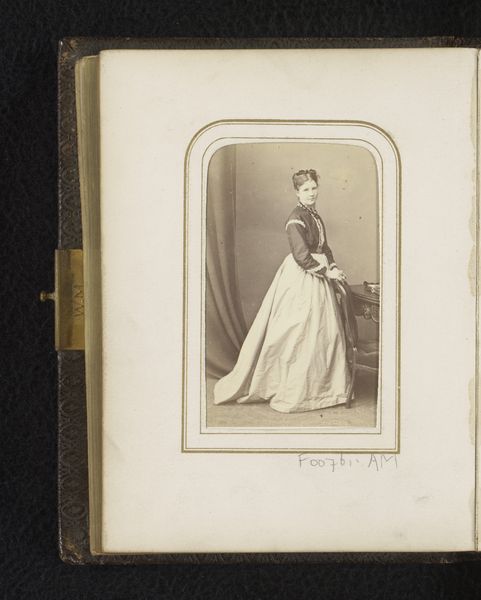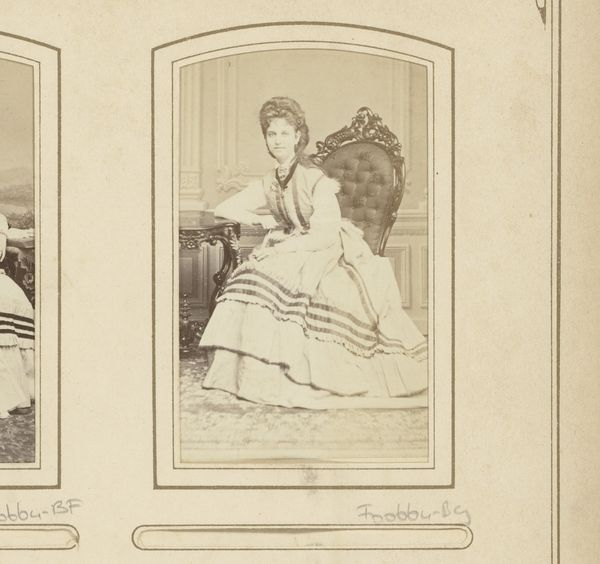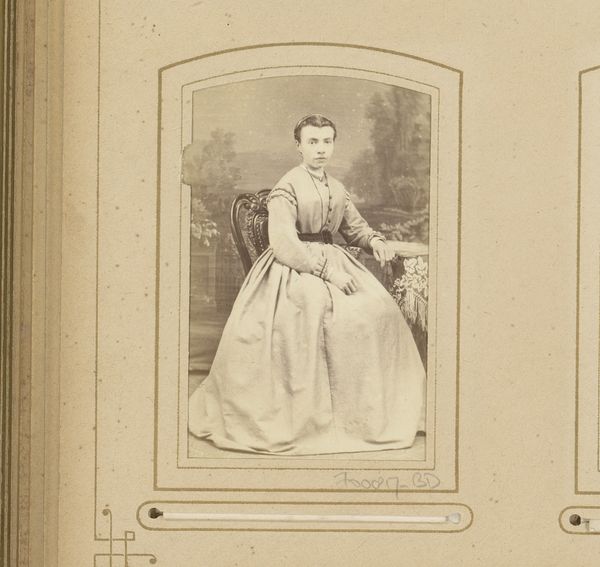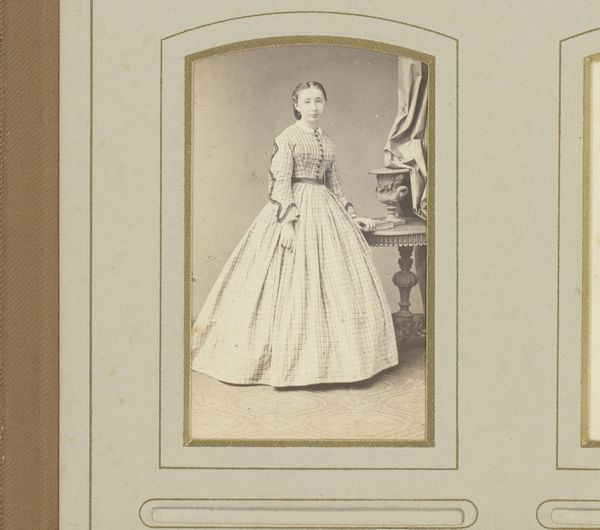
Portret van een vrouw in geruite jurk, staand bij een stoel 1863 - 1906
0:00
0:00
photography, gelatin-silver-print, albumen-print
#
portrait
#
photography
#
coloured pencil
#
gelatin-silver-print
#
watercolor
#
albumen-print
Dimensions: height 84 mm, width 52 mm
Copyright: Rijks Museum: Open Domain
Curator: Here we have a photographic portrait from between 1863 and 1906, currently residing at the Rijksmuseum, entitled “Portret van een vrouw in geruite jurk, staand bij een stoel," which translates to "Portrait of a Woman in a Checked Dress, Standing by a Chair.” Editor: Immediately, it strikes me as holding back secrets. She stands formally, but there's a hint of...defiance? Or is it just my projection onto that plaid? Curator: It's a fascinating ambiguity, isn’t it? Plaid or "geruite" in this context becomes so interesting, less a fabric choice than a symbolic code. Checkered patterns can mean order, control, but here, paired with the sitter’s gaze, it hints at something restrained but not entirely subdued. Editor: Exactly! She’s not disappearing into the wallpaper, despite the domestic setting hinted at by the chair. I see a woman aware of the camera, playing a role perhaps, but also asserting a presence. It's like a theatrical performance of "respectable lady." Curator: Photography at this time was still very much ritualized, steeped in visual rhetoric of power and status. Albumen and gelatin-silver prints were popular processes; each demanded patience, and sitting still was crucial, reinforcing social norms. That chair is an interesting prop... Editor: Yes, chairs often act as thrones in portraiture, but it also makes her dependent, weighed down by gravity and expectations. I wonder what the "true" image, the one she has of herself when she's alone is... It almost seems like the very nature of portraiture can lock her in a box! Curator: Or, potentially, in an oval... Look at that frame around the image. It echoes jewelry design, as if the sitter were precious and must be mounted appropriately for viewing in social life. So it creates the frame not just around the image but also for her image itself. Editor: Very true. These conventions can speak volumes if we pay close attention. Well, I’ve enjoyed this close encounter of the photographic kind, thinking of her in that elaborate plaid dress, performing femininity for posterity! Curator: Indeed. I am reminded about how powerful objects, images, and photographs continue to be in how we form understandings about both ourselves, our past, and potentially, even our future.
Comments
No comments
Be the first to comment and join the conversation on the ultimate creative platform.


